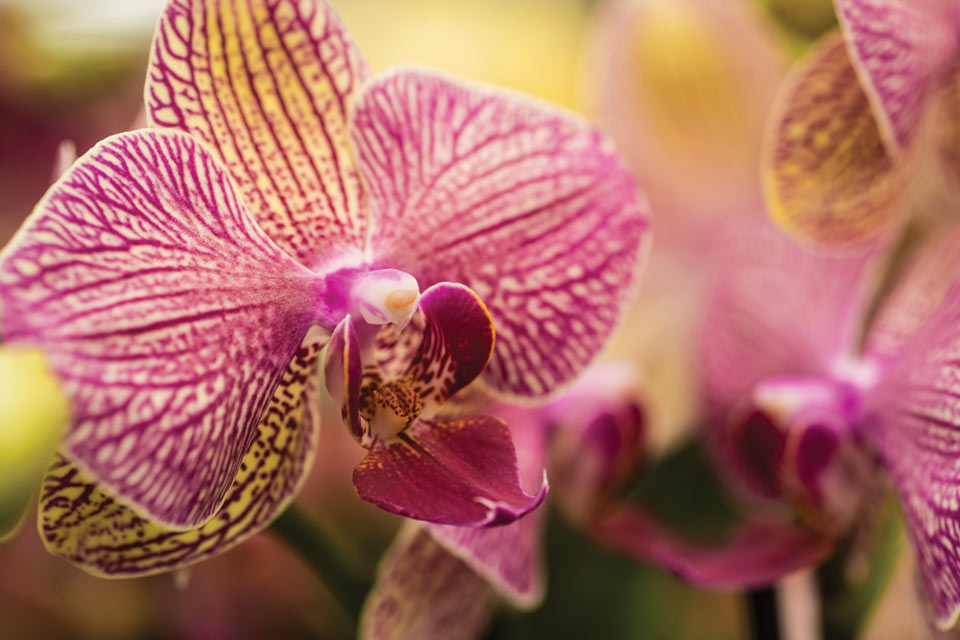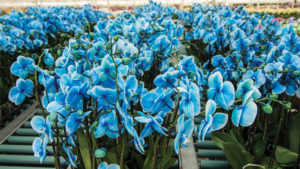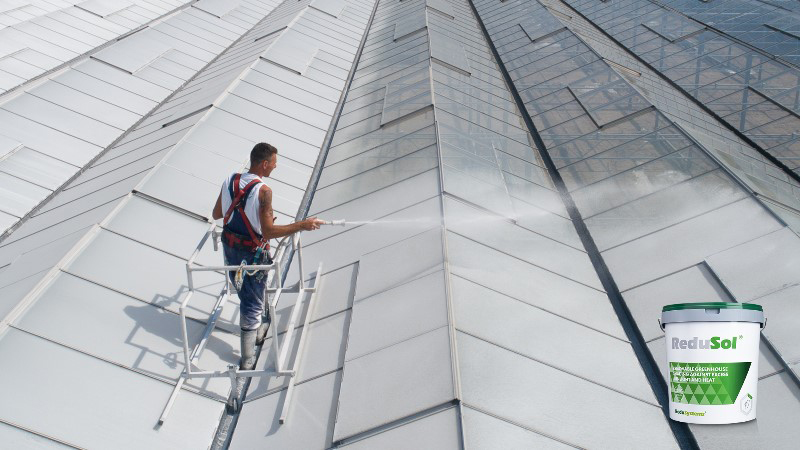How Westerlay Orchids Solved Its Bacteria Problem

To prevent water-based bacteria problems, it was important to treat Westerlay’s water before a drop ever touched the plants.
Bacteria are all around us and, for the most part, they cause no real harm and can even be helpful. But in the right conditions, like a warm, wet greenhouse, they can cause some serious damage. That was the problem that Westerlay Orchids, an orchid-growing company based in California, was dealing with: Water-based bacteria Pseudomonas and Erwinia were attacking the growing orchids through the irrigation system.
Westerlay Orchids started out as a hybrid tea rose grower more than 35 years ago in Carpinteria, CA. At the time, orchid growing was mostly an expensive pastime for hobbyists and collectors. But in the early 2000s, the company noticed a shift in the flower market, so it transitioned to potted orchids in 2003 when new technology made the colorful, tropical blooms affordable for the average person.
Since then, the company has doubled in size, with 22 acres of modern greenhouses. Its staff consists of more than 100 people now grows more than 2.5 million potted Phalaenopsis and Cymbidium orchids each year for garden centers, florists, and supermarkets. With its high production volume and customer demand, losing orchids to bacteria was not an option for Westerlay. It needed to address the problem quickly.
Bacteria Spreads Through Water
The humid greenhouses used for orchid cultivation at Westerlay Orchids were the perfect habitat for the bacteria, which creates lesions on the leaves first, then spreads rapidly to the rest of the plant.
Pseudomonas causes a soft, water-soaked blister somewhere on a leaf. As the infection continues, the spot becomes black or brown and dries up. Several spots can appear at the same time. Erwinia starts similarly, with a water-soaked spot. The blister may also have a yellow halo, depending on the specific type of Erwinia. With particularly bad infections, the bacteria will spread to the roots, and the plant may completely rot in two to three days.
Bacteria in Westerlay’s greenhouses was often introduced through plants from vendors.
“The bacteria spreads at an amazing speed, and was causing a huge problem for us,” says Toine Overgaag, President of Westerlay Orchids.
Westerlay’s irrigation water also comes into its three facilities from city and well-water systems. To combat the problems with water-based bacteria, it was important that the water be treated before a single drop hit the plants.

Westerlay Orchids grows more than 2.5 million potted Phalaenopsis and Cymbidium orchids each year.
Using Oxygen To Decontaminate Water
Westerlay contacted CH2O Inc. of Olympia, WA, to see if it offered a product that would treat irrigation water in several tanks. CH2O installed a Sure Flow treatment system in four tanks that eliminates bacteria and other unwelcome matter carried by water. Once installed, technicians calibrated the system to adjust the product dose as the flow changes in the irrigation system.
The liquid treatment product used for the system helps prevent clogs in the irrigation emitters by creating amorphous deposits at the emitter tips that are easily washed away by the next irrigation cycle. The solution has a minimal effect on fertilizers and creates a bio-clean environment for plant cultivation. It also reduces biological and mineral build-up on surfaces including floors, glass, soil, and plants.
Carl Iverson, CH2O inventor, says the system does two things for the orchid-growing operation. First, a non-halogenated oxidizer disinfects the water to eliminate any bacteria. Then, a chelant grabs onto minerals in the water, including iron and other trace nutrients, and keeps them intact. Without the chelant, the oxidizer would break up those vital plant nutrients, making food for the bacteria.
Overgaag says the irrigation system is extremely important to his operation, and he uses it every day. Without it, the bacteria would come back very quickly.
“We’re protecting the plants from bacteria and viruses,” he says. “It’s like a flu shot for a plant.”
Overgaag says using a water treatment system is all about ensuring orchid quality because above all, Westerlay wants to ship healthy, robust plants to its customers.
“Without using this type of system, you don’t know what’s going to happen to the plants when you ship them,” he says. “When we sell the plant, I can now guarantee that it is a healthy plant.”
Maintaining Environmental Standards
One of Westerlay’s top priorities is sustainability. For a company working so hard to be environmentally friendly, the last thing Westerlay wanted to do was to spray chemicals to address its bacteria problem. The water system it chose disinfects with oxygen only and does not halogenate vital fertilizers.
Bactericides and fungicides tend to hang around in the environment for an extended period of time, affecting plants and people. Carl Iverson, CH2O inventor, says using an oxidizer to decontaminate is a better, more environmentally friendly option because the product has a short half-life. Water treatment systems can also kill fungi, bacteria, viruses, algae, and spores immediately without any harsh chemicals. This is a bonus for Westerlay’s employees because they aren’t exposed to any harsh chemicals while taking care of the orchids.
In addition to its irrigation system, Westerlay Orchids has invested in other new technologies to improve efficiency in the greenhouse and to maintain its commitment to sustainability.









